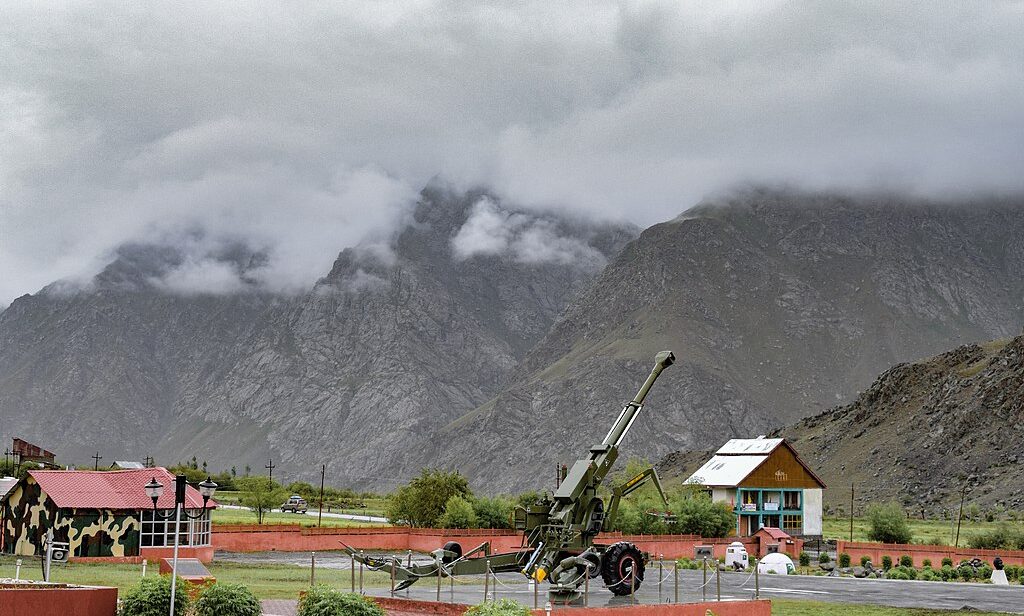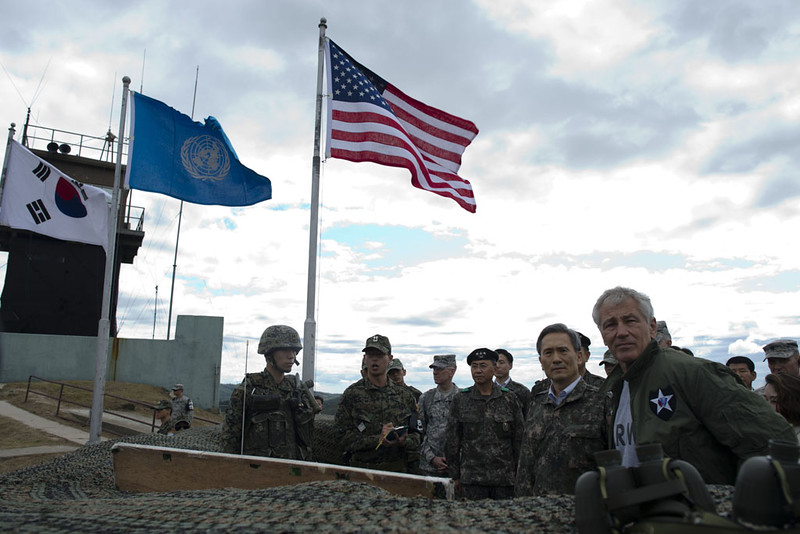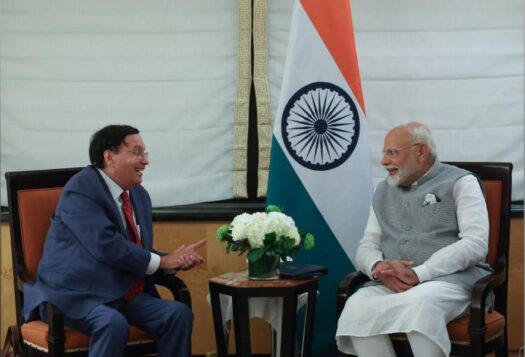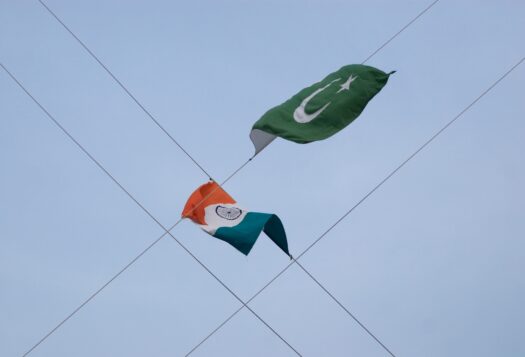
This piece was co-published as a part of a series with 38 North, a publication of the Henry L. Stimson Center.
South Korea’s launch of its Indo-Pacific strategy in December 2022 started the country’s ascent into “strategic clarity” for the U.S.-led Indo-Pacific construct, winning favor with Washington for this policy shift. However, in January 2023, President Yoon Suk-yeol voiced the possibility of either building nuclear weapons indigenously or redeploying U.S. tactical nuclear weapons in the face of an ever-growing nuclear threat from the Democratic People’s Republic of Korea (DPRK or North Korea). This reoriented the debate on South Korea’s own nuclear ambitions.
While Yoon rejected the notion of South Korea immediately becoming a nuclear-armed state, calling it “unrealistic,” his remarks seemed to give credence to domestic voices that increasingly doubt U.S.’ commitment to the Republic of Korea’s (ROK or South Korea) security concerns and advocate a need for an indigenous nuclear deterrent capability. Although the government soon clarified that South Korea’s stance on nuclear nonproliferation remained unchanged and later reaffirmed Seoul’s commitment to the Nuclear Nonproliferation Treaty (NPT) in the Washington Declaration, the nuclear armament genie has been unleashed. Since then, there has been an onslaught of commentaries on the issue in the mainstream security discourse domestically and regionally.
As voices in South Korea increasingly call for the country to consider going nuclear, there are significant questions about what this would mean, not only about the security implications in and around the region, but also the economic and geopolitical costs and trade-offs involved. In South Asia, nuclear tests in the late 1990s by historical rivals India and Pakistan concretized mutual mistrust in an unstable neighborhood. With a nuclear China in the mix, the situation has remained highly volatile. Against this backdrop, this article seeks to draw implications from India’s nuclear test in Pokhran two and a half decades ago for South Korea. It contends that as it considers acquiring nuclear weapons, South Korea should not assume that nuclear parity will bring about greater stability on the Korean Peninsula but be prepared for heightening tensions in its neighborhood, potentially making Seoul more vulnerable to the Chinese and North Korean threats. While acquiring nuclear weapons has its benefits, it will involve certain trade-offs, which Seoul must be prepared to make.
…as it considers acquiring nuclear weapons, South Korea should not assume that nuclear parity will bring about greater stability on the Korean Peninsula but be prepared for heightening tensions in its neighborhood…
The Case for South Korea’s (De)Nuclearization
In late April 2023, the release of the Washington Declaration sought to address South Korean concerns about U.S. extended deterrence and to strengthen allied cooperation by engaging in: “deeper, cooperative decision-making on nuclear deterrence, including through enhanced dialogue and information sharing.” Yet, despite the assurances provided in this declaration, growing calls for nuclearization persist in South Korea. Prior to the Declaration, surveys (e.g., the Chicago Council on Global Affairs and the Chey Institute for Advanced Studies) showed that more than 70 percent of South Koreans approve of the country going nuclear because of numerous external threats. While the Washington Declaration was meant to address this, it fails to adequately deal with South Korean anxieties vis-à-vis whether the U.S. can credibly commit to its security in full, as the nuclear debate in the country remains robust.
Perceptions that South Korea should have its own nuclear weapons have only been strengthened by North Korea’s focus on “perfecting” its nuclear capabilities via intensified missile attacks on the ROK and its revised nuclear strategy. Beijing’s influence further complicates the nuclearization debate. Not only has China been instrumental in supporting the Kim regime and its nuclear pursuits, but it has also been generally supportive of Russia’s war efforts in Ukraine. The South Korean public also identifies China as a serious threat to their country in the coming decade, and more and more South Korean policy is conforming to the U.S.-led Indo-Pacific Strategy.
At the same time, supporters of the ROK’s nuclearization seem convinced that becoming a nuclear state would be a panacea against the persistent nuclear threat from North Korea. They believe it would give the South Korean government greater control over its nuclear policies. Simultaneously, they also hold an assumption that Seoul acquiring a nuclear arsenal would make North Korea less militarily adventurous and that it could even be used as a bargaining chip to motivate North Korean denuclearization. In this context, with debates focused only on reasons why the South would want nuclear weapons and not what kind of trade-offs it would require to achieve that goal, nuclearization has been gaining public support.
Drawing Parallels: Lessons from Pokhran
In testing these assumptions and thinking through some of the potential trade-offs South Korea may face if they should decide to go nuclear, India’s nuclearization is a well-suited parallel from which to draw lessons. Both India and South Korea share similarities in their geopolitical landscapes. Their immediate neighbors represent a dyad wherein they stand as status quo democracies in conflict with the revisionist powers of Pakistan and the DPRK—both of which follow a similar rhetoric of nuclear brinkmanship in their deterrence and security strategies.
Since the 1970s, Pakistan, largely courtesy of the A.Q. Khan network, has been central to nuclear proliferation in Asia. It transferred nuclear technology to North Korea along with other rogue states, such as Libya and Iran. Pakistan today has an “unknown” number of low-yield tactical nuclear weapons as a shield against India’s conventional force superiority. Similarly, in recent years, North Korea has been projecting its intentions for an “exponential increase” in its nuclear arsenal, including tactical nuclear weapons, which will greatly increase regional geopolitical instability. Both countries also must contend with China, which boasts an expanding and rapidly modernizing nuclear arsenal that has resulted in a region with a strong possibility of nuclear proliferation.
However, despite these similarities in their threat environments, India and the ROK have dealt with their security challenges in very different ways. South Korea has done so through its dependence on the U.S.’ extended deterrence commitments, and India via its decision to establish its own nuclear program, which began with a round of nuclear tests in May 1998 in Pokhran. As South Korea faces heightened security challenges, including North Korea’s nuclear progress, China’s military (and nuclear) modernization campaign, and political unpredictability in the United States that could bring about potential shifts in its approach (and credibility) toward its allies, Seoul will have to weigh its choices carefully. As such, much can be gleaned from India’s nuclearization experiences and its decision to end its long-standing nuclear ambiguity with the Pokhran tests.
For India, the decision to go nuclear came with both consequences and benefits. In the beginning, India received severe international backlash. New Delhi had to pay heavy economic and political tolls, which added to uncertainty surrounding its financial stability and economic development. U.S. sanctions on India involved cutting off all assistance (excluding humanitarian aid), banning exports of defense materials and technologies, and ending any credit/credit guarantees or other lending by multilateral financial institutions to India. Germany, Sweden and Denmark followed suit and were accompanied by strong responses from China, European countries, Japan, Australia, New Zealand and Malaysia. Even South Korea expressed that the tests were: “regrettable for coming at a time when international efforts to achieve a nuclear-weapons-free world had advanced with the adoption of the CTBT (Comprehensive Nuclear Test Ban Treaty).”
However, ultimately, the immediate and direct economic impact of these sanctions on India was small and bearable. Within a year and a half, U.S. civilian sanctions (imposed by the Glenn Amendment) were abolished, and by the end of 2001, all defense sanctions were removed for all practical purposes. Realizing India’s centrality in bringing stability to Central and South Asia, the United States sought to build strategic cooperation with the country—lifting the sanctions incrementally.
The immediate political costs of the tests were much more consequential. The Pokhran tests put India’s relationship with the U.S., as well as Pakistan, into a prolonged state of uncertainty. In fact, the U.S. only really began recognizing India as a legitimate civilian nuclear power and a military nuclear power in 2008. Similarly, India’s relations with China also took a nosedive with Beijing’s rather vicious reaction to the tests. India’s biggest long-term cost was that its tests likely pushed Pakistan to follow suit. For Pakistan, its nuclear test explosions were a way of demonstrating its parity with India as a regional power as well as projecting itself as the first Islamic nuclear power. While this may have been a part of New Delhi’s calculus, it still impacted India’s negotiating power and the overall security and stability of the region. A key political consequence was that the tests and the backlash to them enabled Pakistan to draw international attention to the Kashmir issue (that is, the India-Pakistan dispute over the Jammu and Kashmir region since the dissolution of British India in 1947; both countries claim the disputed Himalayan territory of the region in full and administer separate portions of it divided by the Line of Control) when India was interested in framing it as a bilateral dispute.
Nevertheless, the post-1998 estrangement did not last forever, and a strategic partnership with the U.S. was eventually restored. Interestingly, by comparison, Russia’s and France’s more moderate responses paved the way for a substantial expansion of India’s relationships with both countries, which still holds true to date. Furthermore, India’s actions were essential in terms of furthering its national security. By establishing itself as a nuclear power, India was able to project itself as a self-reliant nation capable of defending its sovereignty against potential threats.

For South Korea, the pursuit of its own nuclear armament would undoubtedly be met with similar political and economic costs as what India experienced. Seoul would be violating the NPT and undermining its bilateral agreement with the U.S. that cements the American commitment to South Korea’s defense. Drawing from India’s experiences, if Seoul acquires nuclear weapons, it must be prepared to undergo a significant shift in its relationship with the great powers and a realignment of interests amongst them. Nevertheless, Seoul may be capable and willing to make these trade-offs to reap the benefits that come with being a nuclear power.
At the same time, South Korea’s degree of suffering should it choose to go nuclear is unlikely to be as severe as it was for North Korea. India’s “post-test diplomacy,” for instance, worked to mend international ties within just two years. As a major economic power in Asia and the world, South Korea can also effectively employ economic and commercial diplomacy to dilute potential sanctions. This approach will be challenging considering South Korea’s continued and immense economic dependence on China. Such diplomacy must be accompanied by a broad-based approach that can help it demonstrate to the world that Seoul would be a responsible nuclear power and that it would be willing and eager to engage with various multilateral forums and frameworks. A minimum nuclear deterrent doctrine based on the “no first use” principle could go a long way in this regard.
Implications for the Nonproliferation Regime
While India was able to quickly recover from international backlash for its decision to go nuclear, times have changed. In 2023, would granting the same latitude to a treaty ally that breaks ranks set a bad precedent, especially with countries like Iran also weighing their options? It does not seem impossible, given how integral South Korea is to the U.S. security strategy in Northeast Asia to counter China. Moreover, were North Korea to continue with its nuclear tests and capability, South Korea’s diplomatic and NPT exit path would get easier on the grounds of “extraordinary events.” At the same time, today’s economic-diplomatic fallout might be harsher than it was for India because of the global economic slowdown following the pandemic and the Ukraine war. While it has yet to escalate into the nuclear dimension, the shadow of possibility remains.
Fortunately, Seoul’s reaffirmation of its nonproliferation commitments in the Washington Declaration appears to have, for the moment, put South Korea’s nuclear inclinations on the back burner. Nonetheless, the U.S. and the international community must ensure that any ensuing dialogue focuses on deterrence with the aim of achieving long-term stability, which is the most important lesson from South Asia.
On the contrary, one of the greatest costs of South Korean nuclearization would be the cessation of efforts toward North Korean denuclearization, which could potentially cost the U.S. and the ROK their bilateral alliance.
Conclusion
South Korea should not assume that nuclear parity will bring about greater stability on the Korean Peninsula or in the region. Although domestic proponents of acquiring nuclear weapons seem to expect that becoming a nuclear power could induce North Korea to denuclearize or make them more likely to engage in arms control talks, this seems like entirely wishful thinking. Rather, should South Korea possess nuclear weapons, Pyongyang would more likely use its nuclearized neighbor as further grounds for continued or even heightened buildup of its nuclear arsenal. In other words, South Korean nuclearization could massively impact the regional balance of power by intensifying rivalries and bloc politics in Asia, thereby exacerbating the nuclear risk and destabilizing the region.
It is also unlikely that this would reduce the probability of nuclear war. In the case of India and Pakistan, their nuclearization further fueled their rivalry rather than enhanced deterrence. According to former Secretary of State Mike Pompeo, South Asia almost witnessed a “nuclear conflagration” in 2019.
On the contrary, one of the greatest costs of South Korean nuclearization would be the cessation of efforts toward North Korean denuclearization, which could potentially cost the U.S. and the ROK their bilateral alliance. For example, the U.S. may see South Korea having its own conventional and nuclear capabilities as a reason to withdraw its troops. This would, in turn, make Seoul even more vulnerable to North Korean and Chinese threats. There is also the question of loss of face on the international level, as South Korea’s going nuclear would certainly have negative ramifications with the ROK’s dreams of projecting itself as a responsible power suffering a serious setback.
Furthermore, the risk of an arms race that would undermine regional security and prompt countries like Japan, which also faces threats from Pyongyang and Beijing, is critical. Undoubtedly, the more nuclear-armed states in the region, the higher the risk of miscalculation or accidents, which have the potential to trigger a nuclear disaster.
In this context, it is up to South Korea to consider the pros and cons of pursuing its own nuclear power, weigh the costs and trade-offs involved, and decide whether it is willing to take a calculated risk of going nuclear.
Also Read: SAV Q&A: Understanding the Evolution of Missile Technology in Southern Asia
***
Image 1: Kargil War Memorial via Wikimedia Commons
Image 2: Former U.S. Secretary of Defense tours DMZ via Flickr


